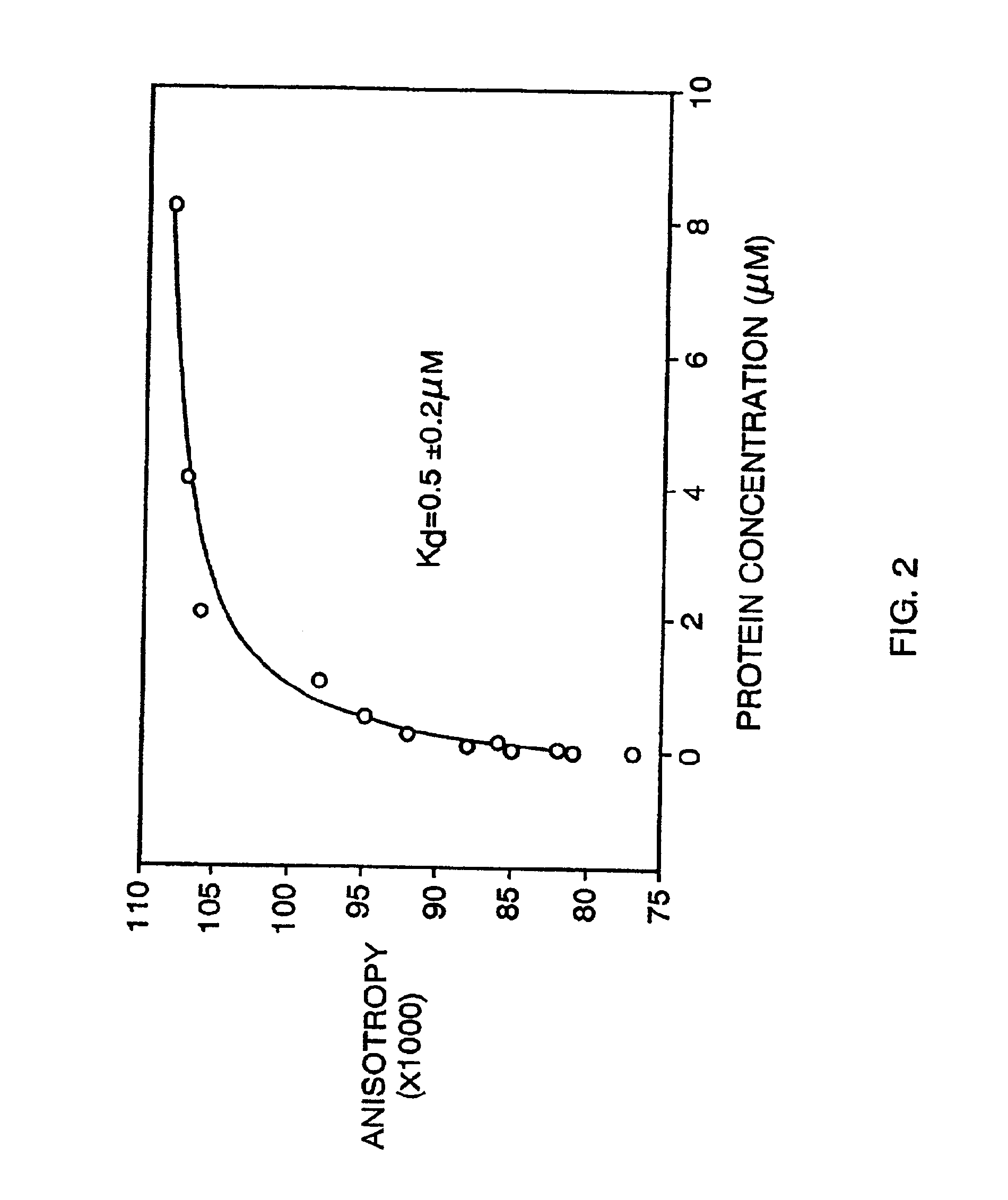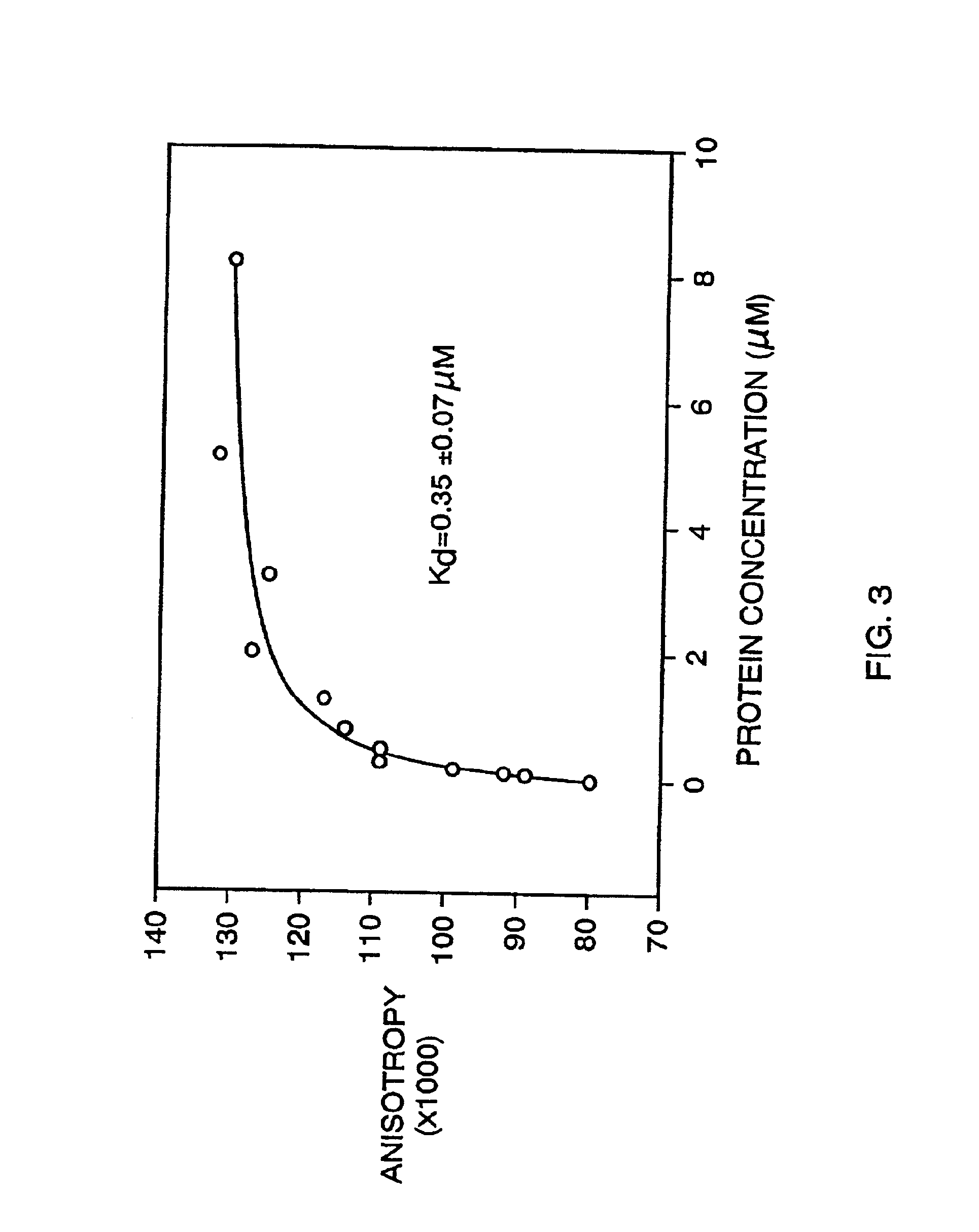Fibrin binding moieties useful as imaging agents
a technology of binding moieties and imaging agents, which is applied in the direction of peptides, biological material analysis, biological testing, etc., can solve the problems of stress and destruction of red blood cells, and achieve the effects of excellent thrombus specific imaging agents, effective treatment of thrombus associated diseases, and effective detection and diagnosis of thrombi
- Summary
- Abstract
- Description
- Claims
- Application Information
AI Technical Summary
Benefits of technology
Problems solved by technology
Method used
Image
Examples
example 1
Preparation of a Fibrin Target for Library Screening
[0236]For screening libraries to isolate binding moieties for fibrin, the soluble fibrin-derived polypeptide DD(E) was prepared following a modification of a published method (Moskoitz and Budzynksi, Biochemistry, 33: 12937-12944 (1994) and references therein). Fibrinogen containing a Factor XIII trace impurity (1 g, Grade L; purchased from American Diagnostica) was dissolved in TBS buffer and dialyzed overnight against TBS containing 5 mM citrate. The fibrinogen concentration was adjusted to 3.0 mg / ml and CaCl2 was added to a concentration of 10 mM. Clotting of the fibrinogen was initiated by the addition of thrombin to 0.5 U / ml and the clot was incubated for 3 hours at 37° C. The clot was cut up with a spatula to release water and to concentrate the clot. The clot pieces were washed twice with TBS.Ca buffer (TBS containing 2 mM CaCl2) and were centrifuged at 4,000×g to compact the clots between washes. The clot material was resus...
example 2
Screening of Phage Display Libraries
[0238]Several phage display libraries, including a TN6 / VI phage library displaying variegated exogenous single-loop peptides based on a polypeptide template having the structure Xaa-Xaa-Xaa-Cys-Xaa-Xaa-Xaa-Xaa-Cys-Xaa-Xaa-Xaa (SEQ ID NO: 13) (3.3×1012 peptide diversity displayed on M13 phage) was diluted into 100 μL of binding buffer (50 mM Tris, 150 mM NaCl, 2 mM CaCl2, 0.05% Tween-20).
[0239]Before selecting phage that bound to the fibrin or DD(E) targets, at the beginning of each screening round, the libraries were depleted of fibrinogen binders: Fibrinogen was biotinylated by the same method employed for DD(E) biotinylation, and then immobilized on magnetic beads. The beads were aliquoted into five tubes. The phage library was incubated with the beads in the first tube for 10 minutes, the beads were pelleted with a magnet, and the supernatant, now at least partially depleted of fibrinogen binding phage, was transferred to a second tube. This pr...
example 3
Analysis of High koff Isolates
[0240]After five rounds of selection, the eluted phage were propagated and a portion plated to isolate phage plaques arising from individual clones. Ninety such clones were selected randomly, propagated, and tested individually for binding to fibrin in a dried fibrin plate assay. Dried fibrin plates were prepared as described above for the library screening. Phage samples (˜109 phage each) were incubated in the dried fibrin plate wells in binding buffer (50 mM Tris, 150 mM NaCl, 2 mM CaCl2, 0.05% Tween-20) containing 0.1% HSA. After 1 hour, the plates were washed 5 times with binding buffer. Anti-M13 antibody conjugated to horseradish peroxidase (Pharmacia) was added at 1 / 5000 dilution in binding buffer to the wells and incubated with the fibrin for 1 hour. The wells were again washed 5 times with binding buffer and the presence of the antibody / phage / fibrin complex was measured with HRP calorimetric reagents (3,3′,5,5′-tetramethylbenzidine (TMB) and H2O...
PUM
| Property | Measurement | Unit |
|---|---|---|
| molecular weight | aaaaa | aaaaa |
| molecular weight | aaaaa | aaaaa |
| pH | aaaaa | aaaaa |
Abstract
Description
Claims
Application Information
 Login to View More
Login to View More - R&D
- Intellectual Property
- Life Sciences
- Materials
- Tech Scout
- Unparalleled Data Quality
- Higher Quality Content
- 60% Fewer Hallucinations
Browse by: Latest US Patents, China's latest patents, Technical Efficacy Thesaurus, Application Domain, Technology Topic, Popular Technical Reports.
© 2025 PatSnap. All rights reserved.Legal|Privacy policy|Modern Slavery Act Transparency Statement|Sitemap|About US| Contact US: help@patsnap.com



